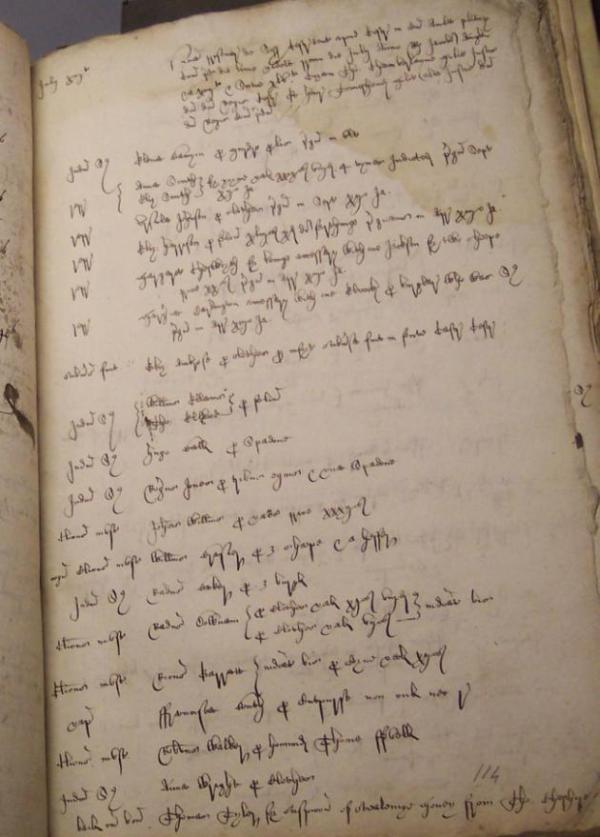Prisoners on Trial in Early Modern Cheshire
Certain types of document record prisoners who were brought before courts and put on trial for felony and what happened to them. This is useful for a number of reasons.
First, not all felony indictments survive. Bills of indictment that were rejected (as 'ignoramus') by grand juries were frequently destroyed; sometimes we only know about those attempted prosecutions from ancillary documents including lists of prisoners.
Secondly, not all surviving indictments record the outcomes of the trials, and jury returns often only record the verdicts and not the sentences. Even when indictments or jury returns do give such information, they may not note subsequent reprieves or other actions.
Two types of document in the Cheshire Great Sessions records can be used to fill in these gaps: calendars of prisoners (or gaol calendars) and the Chester Crown Books. Gaol calendars are commonly found in assize records; the Crown Books are a rarer type of survival. When it comes to prisoners suspected of felony, they contain much the same information (although cross-checking is always a good idea), although the Crown Books also contain a broader range of information about the business conducted at sessions of the court - people bound over by recognizance to appear, misdemeanour prosecutions, presentments, etc. (Gaol calendars will also contain lists of people imprisoned for offences other than felony - usually religious 'offenders' such as Catholics and Quakers.)
Just before the opening of a session of the Court, the gaoler was required to draw up the calendar of these prisoners, and this listing was copied into the Crown Book. Then, during the course of the session, notes were added recording what happened to the prisoners: if they were acquitted or convicted, the sentences, decisions to postpone ('reprieve') executions to appeal for pardons, those who were released, those who were remanded back into the gaol. They often note that pardons had been granted, although the formal records of pardon are not kept in court files but in central governmental records.
Both gaol calendars and Crown Brooks are written using a mixture of Latin and English (Crown Books mostly in Latin), heavily abbreviated and often quite difficult to decipher without some practice. Also, it was common to insert notes of verdicts above prisoners' names and if insufficient space were left inbetween, things could get a bit crowded. I've added notes to help explain the entries for the first of these examples; I may do the other two later if I have time.
Calendar of prisoners, 1607, TNA CHES 24/109/1
Notes on entries:
First (as is usual) are listed prisoners who had appeared at previous sessions of the court and are waiting for pardons or were returned to gaol (often recusants): Ambrose Hempstyd; Robert Garnett; Robert Alcock; William Salisbury; Michael Salisse; William Moores (I'll leave out the details in these cases until I have time to decipher them properly)
Richard Bradford, on suspicion of murder: found guilty (cul' [abbreviation of culpabilis] above his name); sentenced to death (iudm' [contraction of judicium], Sur' [suspendatur] in left margin); reprieve to petition for pardon (repr', abbreviation of reprivati)
Raphe Ward, committed on suspicion of theft of a purse and linen cloth; indicted at the last session for horse theft; sentenced to death? (for the horse?)
Raphe Darlington, theft of oxen: found guilty, claimed benefit of clergy (clicus, contraction of clericus), released (procl')
Jane Williams, theft of a purse: released (there is no indictment on file, so the case was probably rejected by the grand jury)
Ellena Winstanley, 'divers felonies' (several indictments on file): found guilty; pregnant; reprieve
Daniel Casman, theft of cheeses: found guilty to the value of 10d only; to be whipped (vap')
James Hopwood, theft of hats: guilty to the value of 10d; to be whipped


